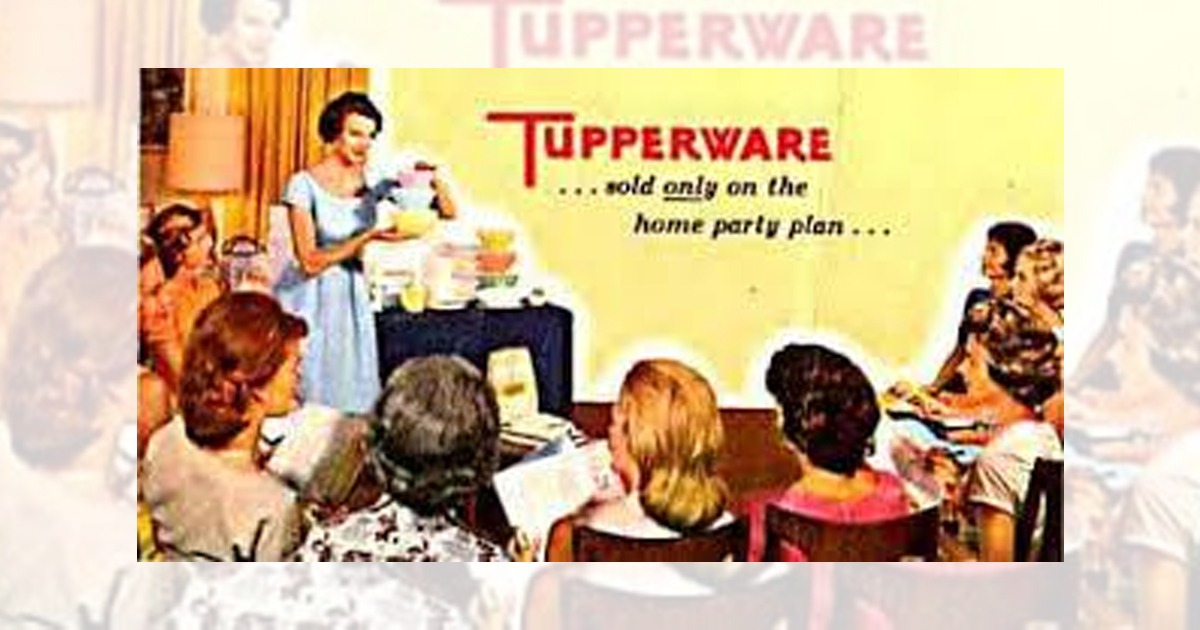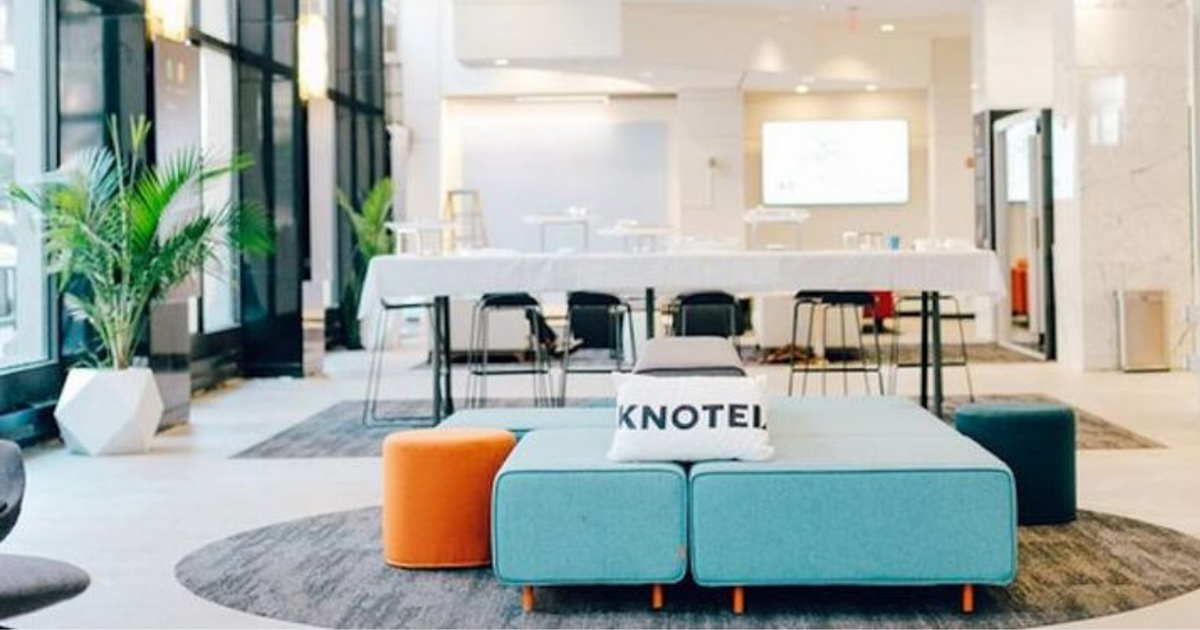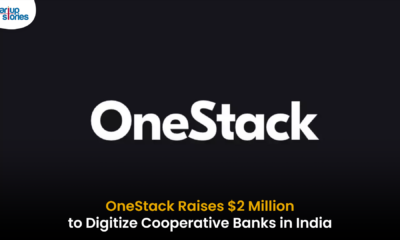Articles
The Success Story Of Tupperware And How It Became A Household Name

If there is food which needs to be carried for a potluck, or leftover food which needs to be refrigerated, there is always a handy plastic Tupperware box which can be used. The name Tupperware is synonymous with storage boxes for food and which moms all over the world use it daily. Millennials will remember the days when moms used to be furious if a Tupperware box is not back home from school or from relatives places. So how did a simple plastic storage box brand like Tupperware gain the trust of mothers in over a hundred countries? Read further to find the interesting story of how Tupperware found its success.
Beginnings:
Tupperware was designed and developed by a Chemical Engineer named Earl Silas Tupper in 1946. The plastic containers were non toxic, durable, flexible and odourless and were used to store food at home. The Tupperware containers came with the patented Tupper seal or ‘burp’ seal which was named after the sound the containers made when the lid was closed. These plastic products were designed for home use in the then new era of refrigerators. But the patented Tupper seal would face hiccups as the products were not picked off the shelves by customers as they had trouble understanding the ‘burp’ seal. It was then a lady named Brownie Wise created a revolutionary sales model which catapulted Tupperware to international fame.
ALSO READ: The Story Of Milkbasket And How It Navigated The COVID-19 Pandemic Lockdown
Growth and Popularity:
Much of Tupperware’s growth and popularity across the globe is credited to a marketing pioneer named Brownie Wise. When she joined Tupperware in the early 1950s, she quickly realised Tupperware could be marketed to the American housewives who have just been asked to return back home after working, during the Second World War while the men were out on the frontlines. Brownie Wise created a sales model which is now called the ‘Party Plan.’ In this plan, women host parties which are attended by other women and these parties contained Tupperware products for sale. This also provided an alternative work option for women who wanted to stay at home but at the same time make money.
This party plan went on to become a great success and Brownie Wise incentivised the women in the plan by organising grand Jubilee Celebrations which were themed events aimed at recognising and rewarding top selling and top recruiting individuals. Tupperware’s only mode of sales was via the party plan for a very long time.
In recent years, Tupperware in North America has moved to a new business model which includes more emphasis on direct marketing channels and eliminated its dependency on authorized distributorships. This transition included selling through Target stores in the United States and Superstores in Canada with disappointing results. However, the party model still exists and Tupperware is promoted by approximately 1.9 million people who are associated on a contractual basis with the company.
Today Tupperware still continues to rule the world in terms of home storage for food and the company has even come up with a new line of products which cater to professional chefs. However, without the out of the box thinking and success of Brownie Wise and her phenomenal Tupperware home parties, Earl Tupper and Tupperware might not have seen the fame they enjoy in the world currently.
Articles
5 Successful Indian Startups Founded By Women

The workplace has undergone massive changes in the last century. At the turn of the Industrial Revolution, any workplace was dominated by men while the women were delegated to run the homes. However, with the advent of the internet and new and exciting technologies, workplaces have undergone a tectonic shift. Women are no longer comfortable staying at home and are instead opting to lead teams and organisations. As every year passes, we get closer to true gender equality, women have proven time and again that they are equally capable to get the job done if not better in some instances. Names like Wolfe Herd (Bumble founder,) Kylie Jenner (Kylie Cosmetics founder,) Masaba Gupta (Masaba clothing label founder) are just some of the names who are known for leading world famous brands with their unique style of leadership.
As the world celebrates International Women’s Day, we bring to you five women founders who run world famous and successful startups.
1) Upasana Taku-MobiKwik
If you are an Indian and are used to doing online shopping, more often than not at the time of payment, you would be directed to a payment gateway. One of these gateways would normally be MobiKwik. The startup is a well known name in the digital payments and digital wallet space. MobiKwik was founded by Upasana Taku in 2009, who prior to founding MobiKwik used to work with PayPal. Today Upasana Taku is also in charge of bank partnerships, business operations, and talent acquisition at MobiKwik.
2) Richa Kar-Zivame
An enthusiastic MBA student, Richa Kar, developed an online lingerie shopping platform in the year 2011. Currently, Zivame is India’s leading online lingerie store with a valuation of more than $ 100 million. The brilliant idea for her own lingerie business came to light when Richa tracked Victoria’s Secret’s sales, who was one of her clients when she was working at SAP. She observed the lingerie sales figures reached peaks overseas but, Indian women were not provided with the similar innerwear. While Richa was studying the Indian lingerie market, she realized the social embarrassment in India surrounding lingerie shopping. Today Richa Kar could be credited with destigmatising the uneasiness surrounding lingerie shopping in India.
3) Falguna Nayar-Nykaa
After a long stint as an investment banker, Falguni Nayar founded Nykaa.com in the year 2013. An online one stop shop for beauty products from Indian and international brands, Nykaa changed the world of online shopping. Who would have ever thought buying makeup online would be so easy? Falguni Nayar proved many critics wrong and created a brand new place for people who love experimenting with styles, designs and colors.
ALSO READ: Zivame: Founding Story
4) Sabina Chopra-Yatra.com
Yatra.com is a popular Indian website for making flight and hotel bookings. Sabina Chopra was instrumental in identifying the potential for travel commerce in India and people moving towards cheaper or easier travel. By the time, people started looking to make bookings, Sabina made sure Yatra.com was already in place. Sabina was the former Head of India Operations of eBookers, which is also an online travel company based in Europe. Along with this, she was also working with Japan Airlines which further adds to her experience in the travel industry.
5) Rashmi Sinha-SlideShare
SlideShare allows people to upload and access their presentations online. While this feature is presently available everywhere, SlideShare was one of the first players in making this happen. Rashmi Sinha was one of the founders of the presentation sharing platform SlideShare. The company became so successful that in 2012, LinkedIn acquired the company for an amount of $100 million.
Let us know in the comments if you know any other wonderful women who have become leaders of their right or have started up and are doing extraordinary things. We at Startup Stories wish a wonderful Women’s Day to all the women in the world who are changemakers.
Articles
Why Are Ads On Digital Media Failing To Reach The Right Audience?

If you are a regular user of social media platforms and also a fan of consuming content on the digital medium, then there is a very high likelihood that you have seen ads on pages you are reading or watching something. There would be times when you have been targeted by an ad which feels like it was wrongly targeted at you. Imagine if you are a vegetarian by choice and while browsing online, if you are targeted by a food delivery app which shows ads about chicken dishes. The ad would only serve to spoil the mood of the online user instead of serving its actual purpose which is to push the user to buy a chicken dish.
These wrongly targeted ads might be the side effects of performance marketing or a weak brand marketing. Performance marketing means advertising programs where advertisers pay only when a specific action occurs. These actions can include a generated lead, a sale, a click, and more. Inshort, performance marketing is used to create highly targeted ads for a very specific target audience at a low cost. Performance marketing usually means high volume for a very specific cost.
Brand marketers on the other hand believe in narrowly defining target audiences but end up spending a lot of money on ad placements. Gautam Mehra, CEO, Dentsu Programmatic India & CDO, Dentsu International Asia Pacific said, “You’ve defined a persona, you know the emotions you want to elicit, but then you buy a YouTube masthead and CricInfo sponsorships because IPL is up. If brand advertisers look at audience-based buys more deeply than just placements, you will see more relevant ads (sic.)”
ALSO READ: How Digital Marketing Is Impacted Due To The COVID-19 Pandemic
Performance marketing is more of a sales function rather than a marketing function and is about meeting the cost of acquisition. This is a reason why budgets are usually high for performance marketing. Mehra goes on to add, “the fact is that an engineer can out-beat FMCGs on performance marketing. Advertisers who have cracked this are spending 10x and are on an ‘always on’ mode (unlike time-bound brand campaigns.)”
There is always the case of supply and demand, with the supply usually exceeding the demand on digital platforms. Ultimately, it boils down to the choice between no ad versus low relevance ad and it is quite easy to guess that having a low relevance ad is better.
Arvind R. P., Director – Marketing and Communications at McDonald’s India (West and South,) said “McDonalds’ for instance, has seen its share of spends on digital grow from 20% levels a couple of years back to over 40% at present. Outcomes of this journey have been encouraging, proven by our media-mix-modelling and other key metrics. We have seen best results from an optimal mix of Television plus digital (sic.)” Moreover, Arvind also believes performance marketing only approach could turn out to be more suited to short term, versus a more consistent full funnel effort. The latter ensures adequate emphasis on building consideration, as well as growing transactions. Arvind feels digital is a complex medium which needs investment in the right talent who could use the right tools. Brands which underestimate the need for the investment are often disappointed from the return on investment from the digital medium.
With the constantly changing consumer dynamics marketers are now shifting to unscripted marketing which frankly needs more insights into the consumer mindset. The lack of marketers to do the proper research is why digital medium is plagued with irrelevant ads.
Articles
From Unicorn To Bankruptcy; Knotel Bears The Brunt Of COVID-19 Pandemic

It is no secret that in the fast paced world of startups, fortunes can change at the snap of fingers. Sometimes startups tend to scale so quickly that they become unicorns and sometimes the fortunes reverse so quickly that a startup can immediately go bankrupt from being a unicorn. The latter was the case for an American property technology startup Knotel, who are now bankrupt due to the disruptions by the COVID-19 pandemic.
Knotel is a property technology company quite similar to WeWork. Knotel designed, built and ran custom headquarters for companies which It manages the spaces with ‘flexible’ terms. Knotel does a mix of direct leases and revenue sharing deals. Knotel marketed its offering as ‘headquarters as a service’ or a flexible office space which could be customized for each tenant while also growing or shrinking as needed. For the revenue-share agreements, Knotel solicits clients, builds out offices, and manages properties, and shares the rent paid to it by the client with the landlord. This model is the majority revenue generator for Knotel.
In March 2020, just before the COVID-19 pandemic unleashed its economic destruction on the world, Knotel was valued at $ 1.6 billion. What is even more interesting is Knotel raised $ 400 million in Series C funding in August 2019 which led to its unicorn status. However, with the COVId-19 pandemic and its consequent lockdowns and curfews by various governments across the world, startups and businesses shifted to a remote working model. This in turn led to startups pulling out of Knotel properties to cut down on working costs.
ALSO READ: Quibi : Startup With A Billion Dollar Launch To Shutting Down All In Six Months
In late March 2020, according to Forbes, Knotel laid off 30% of its workforce and furloughed another 20%, due to the impact of the coronavirus. It was at this point that Knotel was valued at $ 1.6 billion. The company had started the year with about 500 employees. By the third week of March,Knotel had a headcount of 400. With the cuts, about 200 employees remained with the other 200 having either lost their jobs or on unpaid leave, according to Forbes.
In 2021, Knotel filed for bankruptcy and agreed to sell its assets to Newmark, one of their investors for a total of $ 70 million dollars. As work culture is still undergoing changes as a consequence of the COVID-19 pandemic and with many companies realising that remote work model saves costs and improves work efficiency, the flexible workspace sector would continue to face challenges. Knotel is just the tip of the iceberg and is a warning call for the flexible working spaces industry.















binance referral
April 23, 2025 at 8:57 am
Thanks for sharing. I read many of your blog posts, cool, your blog is very good.
打开Binance账户
May 14, 2025 at 1:18 pm
Thanks for sharing. I read many of your blog posts, cool, your blog is very good.
отваряне на профил в binance
May 16, 2025 at 1:01 pm
Your point of view caught my eye and was very interesting. Thanks. I have a question for you.
Mia culpa
July 15, 2025 at 7:38 pm
Thanks a bunch for sharing this with all folks you actually understand what you
are talking about! Bookmarked. Kindly additionally consult with
my site =). We will have a link alternate arrangement
between us
trading platform AMtrade
July 27, 2025 at 2:57 pm
Wonderful goods from you, man. I have take into
accout your stuff prior to and you’re simply too magnificent.
I really like what you’ve bought here, really like what
you are saying and the way by which you say it.
You make it entertaining and you continue to care for
to stay it wise. I can’t wait to learn much more from you.
That is really a tremendous web site.
ezin-capital-india.com
August 1, 2025 at 10:39 pm
What a information of un-ambiguity and preserveness of valuable know-how about unexpected feelings.
fexu-markets-india.com
August 2, 2025 at 10:41 pm
I visit every day a few sites and blogs to read articles, except this website offers
feature based content.
EC markets India review
August 2, 2025 at 10:42 pm
Greetings! I’ve been following your weblog for a while now and finally got
the courage to go ahead and give you a shout out from
Atascocita Tx! Just wanted to say keep up the
fantastic work!
Tattvam India
August 3, 2025 at 10:44 pm
Right here is the right website for everyone who wishes
to find out about this topic. You understand so much
its almost hard to argue with you (not that I really would want to…HaHa).
You certainly put a new spin on a subject that has been written about for ages.
Excellent stuff, just wonderful!
m4u-capital-india.com/
August 3, 2025 at 10:55 pm
If some one wishes expert view on the topic of blogging and site-building afterward i advise him/her to pay
a visit this web site, Keep up the nice job.
OctaFX online
August 4, 2025 at 10:59 pm
Attractive section of content. I just stumbled upon your web
site and in accession capital to assert that I get actually enjoyed account your blog posts.
Any way I’ll be subscribing to your augment and even I achievement you access consistently fast.
capital online trading India
August 25, 2025 at 1:41 pm
My developer is trying to persuade me to
move to .net from PHP. I have always disliked the idea because of the expenses.
But he’s tryiong none the less. I’ve been using WordPress on a number of websites for about a year and am worried
about switching to another platform. I have heard very good things about blogengine.net.
Is there a way I can import all my wordpress posts into it?
Any help would be really appreciated!
binance
August 27, 2025 at 12:12 pm
Your article helped me a lot, is there any more related content? Thanks! https://www.binance.com/join?ref=P9L9FQKY
markets4you India bonus
August 27, 2025 at 12:36 pm
Howdy! I know this is kinda off topic but I was wondering which blog platform are you using for this site?
I’m getting tired of WordPress because I’ve had issues with hackers and I’m looking at alternatives for
another platform. I would be awesome if you could point me in the direction of a good platform.
top options trading shares
August 29, 2025 at 2:45 pm
Hola! I’ve been following your web site for some time now and finally
got the courage to go ahead and give you a shout out from Houston Tx!
Just wanted to tell you keep up the good job!
binance
September 22, 2025 at 8:43 pm
Your point of view caught my eye and was very interesting. Thanks. I have a question for you.
click here
October 9, 2025 at 6:41 pm
Fantastic beat ! I would like to apprentice
while you amend your web site, how can i subscribe for a blog site?
The account aided me a acceptable deal. I had been tiny bit acquainted of this your broadcast offered bright clear concept
minibus services
October 9, 2025 at 7:40 pm
Hey there I am so delighted I found your website, I really found you by error, while I was researching
on Digg for something else, Anyways I am here now and would just like to say thank you for a marvelous post and a all round thrilling blog (I also love the theme/design), I don’t have
time to browse it all at the minute but I have bookmarked
it and also added your RSS feeds, so when I have time I will
be back to read a lot more, Please do keep up the great job.
Register
October 30, 2025 at 7:10 am
Can you be more specific about the content of your article? After reading it, I still have some doubts. Hope you can help me.
Getfoureyes.Com
November 2, 2025 at 3:59 am
Tremendous things here. I’m very satisfied to see your article.
Thanks so much and I am looking ahead to contact you.
Will you kindly drop me a e-mail?
MM88
November 6, 2025 at 10:23 am
Khám phá thế giới giải trí trực tuyến đỉnh cao tại MM88, nơi mang đến những trải nghiệm cá cược thể thao và casino sống động.
iwin
November 7, 2025 at 3:50 pm
iwin – nền tảng game bài đổi thưởng uy tín, nơi bạn có thể thử vận may và tận hưởng nhiều tựa game hấp
MM88
November 8, 2025 at 1:06 am
Với giao diện mượt mà và ưu đãi hấp dẫn, MM88 là lựa chọn lý tưởng cho các tín đồ giải trí trực tuyến.
ios超级签
November 8, 2025 at 8:17 am
苹果签名,苹果超级签平台,ios超级签平台ios超级签苹果企业签,苹果超级签,稳定超级签名
站群程序
November 12, 2025 at 11:02 pm
搭载智能站群程序,自动化搭建与管理,为SEO项目提供核心驱动力。站群程序
GO88
November 14, 2025 at 11:53 am
Tham gia cộng đồng game thủ tại Go88 để trải nghiệm các trò chơi bài, poker phổ biến nhất hiện nay.
J88
November 16, 2025 at 4:11 am
Đến với J88, bạn sẽ được trải nghiệm dịch vụ cá cược chuyên nghiệp cùng hàng ngàn sự kiện khuyến mãi độc quyền.
backlink checker tool
November 19, 2025 at 1:58 am
After study a couple of of the blog posts on your web site now, and I actually like your manner of blogging. I bookmarked it to my bookmark web site record and will probably be checking again soon. Pls take a look at my web site as well and let me know what you think.
Buy Website Traffic
November 25, 2025 at 3:39 pm
I have taken notice that in digital camera models, extraordinary sensors help to concentrate automatically. These sensors regarding some camcorders change in contrast, while others start using a beam of infra-red (IR) light, specially in low lighting. Higher specification cameras at times use a mix of both methods and might have Face Priority AF where the dslr camera can ‘See’ the face while keeping your focus only in that. Many thanks for sharing your thinking on this weblog.
E8 Funding
December 9, 2025 at 3:02 am
Very soon this website will be famous amid all blogging and site-building users, due to it’s nice posts